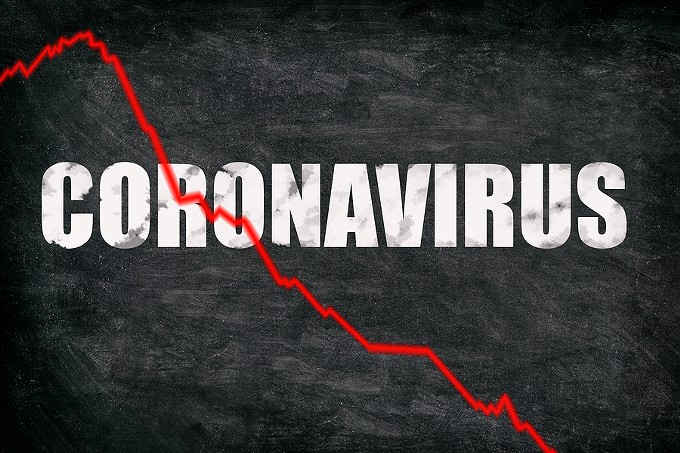When he wrapped up a press conference announcing he'd let his stay-at-home order expire last week, Gov. Doug Ducey assured Arizonans that the worst of the COVID-19 outbreak was behind the state.
"We are clearly on the other side of this pandemic," Ducey said.
There's no denying that the stay-at-home order, first issued at the end of March, had a devastating impact on many Arizonans. More than a half-million people in the state have filed for unemployment and the number who have lost jobs is even higher. Meanwhile, many business owners are struggling to survive as their customers have stayed away or drastically decreased.
Despite Ducey's assurances, however, the pandemic curve continues to climb in Arizona. As of Tuesday morning, Arizona had more than 14,000 confirmed cases, while 704 people had died after contracting the virus.
Between Ducey's confident assertion that Arizona was on a downward curve on Tuesday, May 12, and the Weekly's print deadline on Tuesday, May 19, Arizona's confirmed cases jumped from 11,736 to 14,566.
To justify lifting the stay-at-home order, Ducey is relying on a "gating criteria" developed by the CDC. Among them:
• States should have a downward trajectory of influenza-like illnesses reported in a 14-day period and a downward trajectory of COVID-like symptoms reported within 14-day period. Arizona meets that criteria.
• Hospitals should be able to treat all patients without crisis care and have a robust testing system in place for at-risk healthcare workers, including emerging antibody testing. The hospitals are handling emergency cases from the outbreak and can now return to elective surgery and private labs are handling most of Arizona's testing.
• Here's the sticky one. The CDC calls for a downward trajectory of documented cases within a 14-day period OR downward trajectory of positive tests as a percent of total tests within a 14-day period.
Arizona definitely has not had 14 straight days of declining positive tests. As of Tuesday, May 19, that clock was reset on Thursday, May 14, when the state reported 382 positive tests.
But until recently, Arizona was last in the nation when it came to per capita testing, according to tracking by the Kaiser Family Foundation. Given that a lack of test kits meant the state put in strict restrictions on who could get a test, it's not surprising to see the number of positive cases rising now that more tests are available.
But as more tests become available, it's also virtually inevitable that the alternative criteria that the Ducey administration is using to justify lifting the stay-at-home order—14 straight days of a decrease in the number of positive tests as a percentage of overall testing—will be met.
State lawmaker Randy Friese, who also works as an emergency room doctor, says that creates an "artificial downward trend."
"The population of people tested before the blitz were high-risk, right? Exposed, having symptoms, things like that," Friese said. "So the proportion of those tests are going to be higher than if you tested the general population. Now the general population is being tested in the blitz. So yes, I would expect proportion of positive tests to decline. And would expect that the governor would take that into account and say I'm not going to make decisions based on this decline. But it seems like he is pointing to the decline and saying, 'We're ready to open,' which to me is a little disingenuous."
Ducey spokesman Patrick Ptak pushed back on Friese's assertion, saying that testing is still limited to people who exhibit symptoms or who believe they have been exposed to COVID-19.
"Throughout this process, we've prioritized expanding testing in Arizona," Ptak said in an email. "Our state has faced the same shortage of testing supplies we've seen across the country, but as supplies build, we've been able to expand and increase testing. This is a good thing. There is no way to artificially create a downward trend. This is especially true as Arizona continues to prioritize testing for our vulnerable populations and those who believe they've been recently exposed."
But there's little denying the trend: Even under the stay-at-home order, cases of COVID-19 were growing, not shrinking. Lifting the stay-at-home order now means that more people will be interacting with each other, giving the virus more opportunity to spread.
Tucson Mayor Regina Romero is among those who believe the state is moving too quickly.
"As eager as we all are to return to any sense of normalcy, I believe that the governor is moving too quickly and that we should proceed methodically and cautiously to prevent a re-emergence that would be even more damaging to our economy in the long-run," Romero said last week. "Dr. Fauci and our nation's top health experts testified earlier this week that without widespread testing and a robust contact tracing plan in place, states that are re-opening risk a second wave of the virus. Although some improvements have been made, we lag the rest of the country in both areas. I don't want our economy to just re-open, I want it to remain open. That will not happen if there is a second wave of the virus and we are forced to shut down again."


